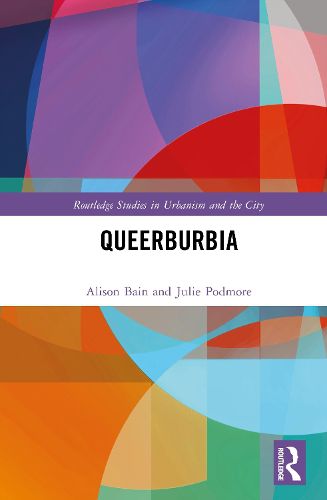Readings Newsletter
Become a Readings Member to make your shopping experience even easier.
Sign in or sign up for free!
You’re not far away from qualifying for FREE standard shipping within Australia
You’ve qualified for FREE standard shipping within Australia
The cart is loading…






To subvert the metronormativity of queer urban studies and re-place queer suburbanism, Queerburbia examines LGBTQ2S place-making/unmaking/remaking on the peripheries of Canada's three largest city-regions (Vancouver, Toronto, and Montreal), investigating print media and census representations, civic and para-public allyship, individual and collective activism, and everyday practices of living and dreaming as revealed through photo-elicitation interviews and collective counter-mapping that together unmake and remake suburban places as queer.
Queerburbia offers a comparative case study of how large Canadian city-regions become queerer through LGBTQ2S suburban place-making/unmaking/remaking. For urban scholars, it deepens place-making theory with the conceptual introduction of the neologism "queerburbia" as a means to re-envision metropolitan peripheries as sites of queer futures. Practically, it offers civic leaders, urban planners, and policymakers insights into the complex dynamics of municipal LGBTQ2S misrecognition and critical allyship strategies beyond rainbowization. Methodologically innovative, this book combines print media, census, and municipal policy analysis with expert and photo-elicitation interviews, counter-mapping focus groups, and ethnographic fieldwork. It reveals the multiple layers of queerburban place-making/unmaking/remaking, demonstrating how statistical and media representations, municipal services and social inclusion policies, para-public and activist resistance and organizing, and individual living and dreaming emplace sexual and gender minorities in suburbia.
An interdisciplinary book at the interstices of Geography, Urban Studies, Suburban Studies, Urban Planning, and LGBTQ+ Studies, its intended audiences are scholars of cities, queer theory, and sexual and gender minority life extending to Women's and Gender Studies, Cultural Studies, Sociology, Anthropology, and Psychology. It targets upper-level undergraduates, graduate students, researchers and practitioners of municipal social inclusion, including civic leaders, urban policymakers, and urban planners.
$9.00 standard shipping within Australia
FREE standard shipping within Australia for orders over $100.00
Express & International shipping calculated at checkout
To subvert the metronormativity of queer urban studies and re-place queer suburbanism, Queerburbia examines LGBTQ2S place-making/unmaking/remaking on the peripheries of Canada's three largest city-regions (Vancouver, Toronto, and Montreal), investigating print media and census representations, civic and para-public allyship, individual and collective activism, and everyday practices of living and dreaming as revealed through photo-elicitation interviews and collective counter-mapping that together unmake and remake suburban places as queer.
Queerburbia offers a comparative case study of how large Canadian city-regions become queerer through LGBTQ2S suburban place-making/unmaking/remaking. For urban scholars, it deepens place-making theory with the conceptual introduction of the neologism "queerburbia" as a means to re-envision metropolitan peripheries as sites of queer futures. Practically, it offers civic leaders, urban planners, and policymakers insights into the complex dynamics of municipal LGBTQ2S misrecognition and critical allyship strategies beyond rainbowization. Methodologically innovative, this book combines print media, census, and municipal policy analysis with expert and photo-elicitation interviews, counter-mapping focus groups, and ethnographic fieldwork. It reveals the multiple layers of queerburban place-making/unmaking/remaking, demonstrating how statistical and media representations, municipal services and social inclusion policies, para-public and activist resistance and organizing, and individual living and dreaming emplace sexual and gender minorities in suburbia.
An interdisciplinary book at the interstices of Geography, Urban Studies, Suburban Studies, Urban Planning, and LGBTQ+ Studies, its intended audiences are scholars of cities, queer theory, and sexual and gender minority life extending to Women's and Gender Studies, Cultural Studies, Sociology, Anthropology, and Psychology. It targets upper-level undergraduates, graduate students, researchers and practitioners of municipal social inclusion, including civic leaders, urban policymakers, and urban planners.